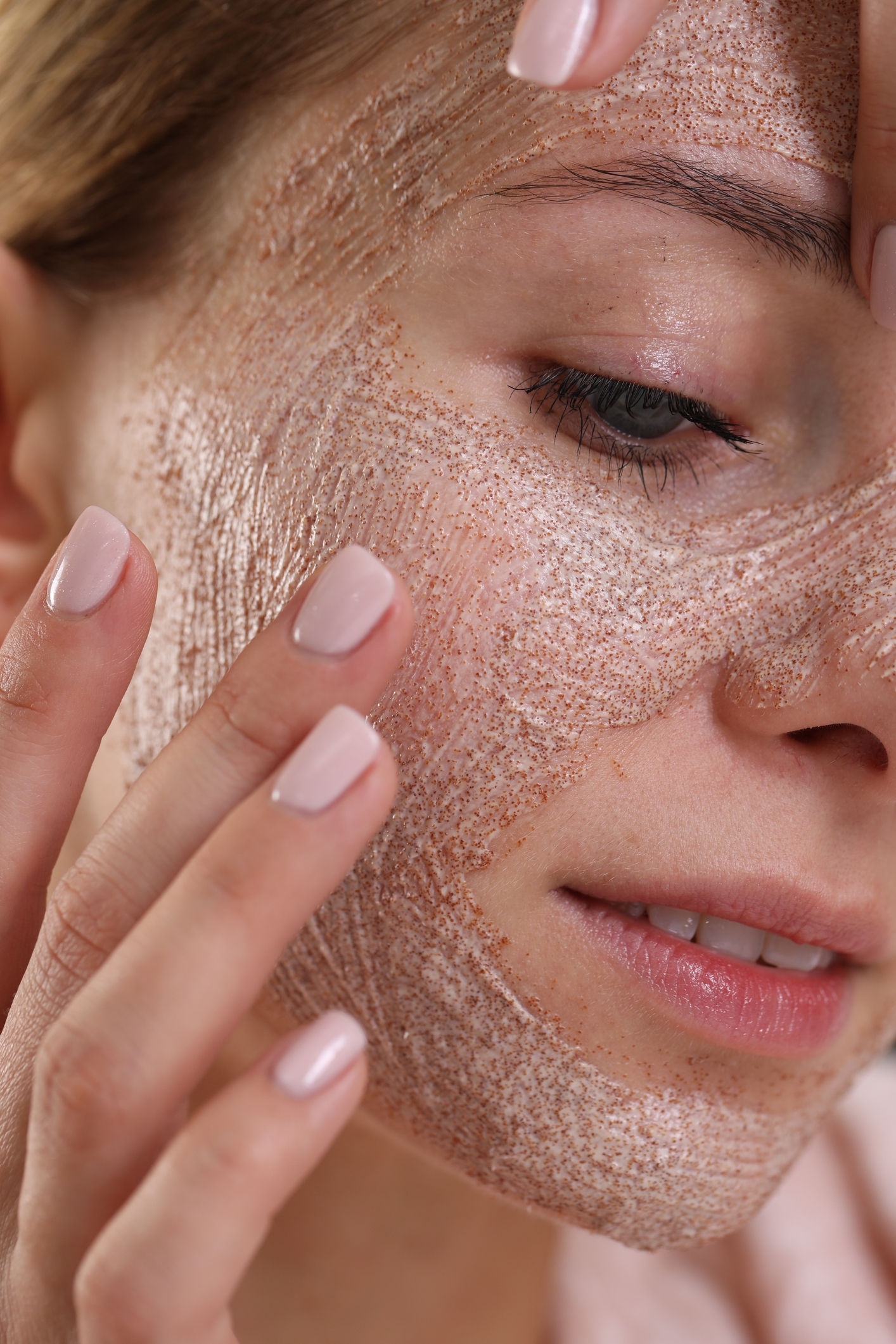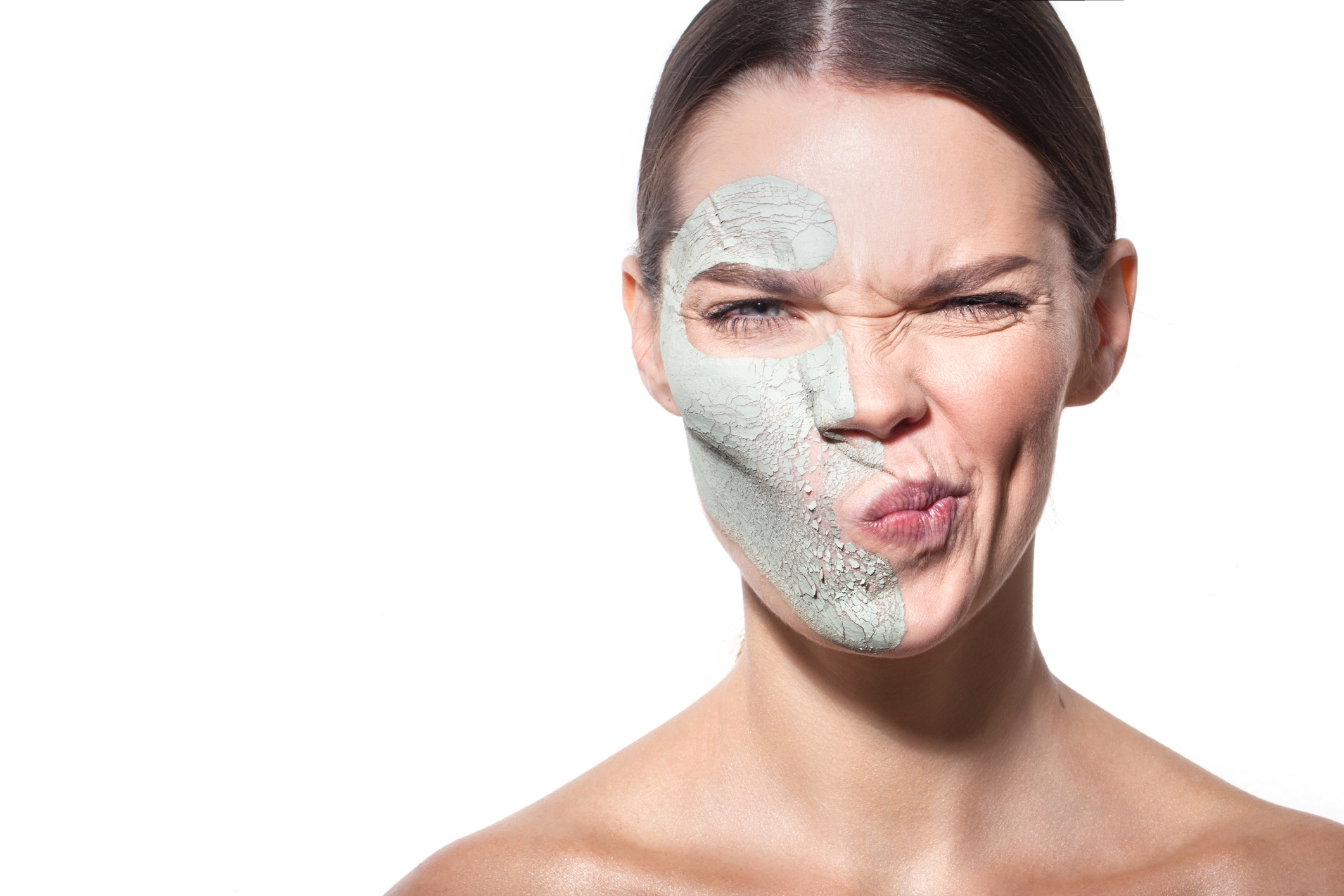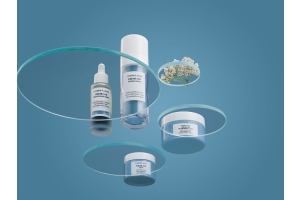Exfoliation and face masks are the ultimate dynamic duo for achieving a radiant, youthful complexion—not just for anti-aging skincare but for any skincare routine. These two practices work in harmony to rejuvenate the skin, remove impurities, and enhance the absorption of other products. By incorporating exfoliation and face masks into your routine, you can effectively clear away dead skin cells, unclog pores, and address a wide range of skin concerns such as dryness, aging, and dullness.
This article will explore why exfoliation and face masks are essential components of a skincare regimen, explain the science behind these methods, and provide recommendations from dermatologists on how to best incorporate them into your routine for glowing, healthy skin.
Do Dermatologists Recommend Exfoliating?
Dermatologists often recommend exfoliation as a key step in maintaining healthy, glowing skin. By removing the top layer of dead skin cells, it helps to improve skin texture, unclog pores, and make skincare products, such as moisturizers and serums, more effective. Regular exfoliation can prevent pore congestion and reduce breakouts for those with oily skin, making it easier to achieve a clearer complexion. In fact, the best exfoliator for oily skin often includes ingredients like salicylic acid, which targets excess oil and cleans deep within the pores.
Exfoliation is equally important for mature skin, as the skin’s natural cell turnover slows down with age. Gentle exfoliation can help reduce the appearance of fine lines and improve skin elasticity. Choosing the best face exfoliator for mature skin, such as a mild chemical exfoliant with alpha hydroxy acids (AHAs) like glycolic or lactic acid, allows for effective exfoliation without causing irritation.
Overall, dermatologists emphasize that regular exfoliation benefits all skin types, but selecting the right exfoliator based on your specific skin needs is crucial for achieving the best results.
What's the Best Way to Exfoliate Your Face?
The best way to exfoliate your face depends on your skin type, as different methods work better for specific concerns. Broadly, exfoliation can be divided into two kinds: physical, which involves using scrubs or brushes, and chemical, which uses acids like AHAs and BHAs to dissolve dead skin cells without scrubbing. Knowing how to exfoliate your face properly ensures that your skin gets the maximum benefits without irritation.
Dermatologists often recommend chemical exfoliants for people with sensitive skin. Physical exfoliants with abrasive particles may cause irritation, redness, or inflammation. Instead, a gentle chemical exfoliant is the best exfoliator for your face with sensitive skin. Ingredients like lactic acid or mandelic acid are mild and effective for sensitive skin, helping to gently resurface the skin without causing damage. Avoid using harsh scrubs or over-exfoliating, as this can exacerbate sensitivity.
For dry skin, the key to successful exfoliation is choosing a product that removes dead skin and hydrates. AHAs, such as glycolic acid, are ideal as they exfoliate the skin's surface while attracting moisture. Finding the best exfoliator for dry skin often means looking for products that contain hydrating ingredients like hyaluronic acid or oils. After exfoliating, following up with a rich moisturizer is essential to lock in hydration and restore the skin’s natural barrier.
For mature skin, exfoliation becomes essential as the skin’s natural cell turnover slows down with age. So, what is the best face exfoliator for mature skin? A mild chemical exfoliant that contains AHAs, such as lactic acid or glycolic acid, is typically the most effective for this skin type. These ingredients help exfoliate and encourage new cell growth, reducing the appearance of fine lines and promoting a smoother texture. It is also crucial to choose an exfoliator that is gentle enough not to irritate aging skin, which tends to be more delicate.
Lastly, the best exfoliator for the face for general use depends on your skin's specific needs. Physical exfoliants, such as those with microbeads or grains, can benefit oily or tougher skin types more. In contrast, chemical exfoliants work well for all skin types, especially sensitive or dry skin. Regular but controlled exfoliation leads to a brighter, smoother complexion, allowing other skincare products to absorb more effectively.
How Often Should You Exfoliate Your Face?
The frequency with which you should exfoliate your face largely depends on your skin type, the products you use, and how your skin responds to exfoliation. For most people, exfoliating 2-3 times per week is ideal to keep the skin clear and glowing without causing irritation. However, different skin types require different approaches to achieve the best results.

For those with oily skin, exfoliating more frequently, about 3-4 times per week, can help manage excess oil production and prevent clogged pores. The best exfoliator for oily skin often contains ingredients like salicylic acid or glycolic acid, which penetrate deep into the pores to remove oil and dead skin cells. These chemical exfoliants are particularly effective in reducing the appearance of acne and blackheads, which are common in oily skin types. However, even those with oily skin should be careful not to over-exfoliate, as stripping the skin of its natural oils can lead to increased oil production.
A gentler approach is recommended for individuals with mature skin, as the skin tends to become more delicate with age. Exfoliating 1-2 times a week with a mild product is typically enough to encourage cell turnover without causing irritation. The best face exfoliator for mature skin contains alpha hydroxy acids (AHAs) like lactic acid, which gently exfoliates while promoting hydration. Over-exfoliating mature skin can lead to dryness and increased sensitivity, so choosing a product that provides both exfoliation and nourishment is crucial.
For normal or combination skin, sticking to a 2-3 times per week routine is usually sufficient. Choosing the best exfoliator for your face, in this case, depends on your specific needs, whether you want a physical exfoliant with fine grains or a chemical exfoliant that targets the deeper layers of the skin. Pay attention to how your skin reacts to exfoliation and adjust the frequency accordingly to avoid over-exfoliation, which can lead to redness, dryness, or irritation.
To summarize, here is a quick overview of how often you should exfoliate based on your skin type:
- Oily Skin: 3-4 times per week, using chemical exfoliants like salicylic or glycolic acid to manage excess oil and prevent clogged pores.
- Mature Skin: 1-2 times per week with a gentle exfoliant containing AHAs (like lactic acid) to promote cell turnover without irritation.
- Normal/Combination Skin: 2-3 times per week, adjusting based on how your skin reacts to physical or chemical exfoliants.
- Sensitive Skin: 1 time per week with a mild, non-abrasive exfoliant to avoid irritation.
Ultimately, the goal is to maintain a balance: exfoliate often enough to keep your skin smooth and clear but not so often that it damages your skin’s natural barrier. Adjusting your exfoliation routine based on your skin type will help you achieve the best results for a healthy, glowing complexion.
Are Face Masks Actually Good for Your Skin?
Yes, when used properly, face masks can be incredibly beneficial for your skin. They offer targeted treatments for various skin concerns and are a valuable addition to any skincare routine. One of the most important advantages of face mask skincare is its ability to deliver concentrated ingredients deep into the skin, providing hydration, nourishment, and sometimes even exfoliation in one step.
A hydrating face mask can work wonders for dry or dehydrated skin. Masks enriched with ingredients like hyaluronic acid, aloe vera, or ceramides can instantly boost moisture levels in the skin, leaving it feeling soft, plump, and rejuvenated. These masks are particularly useful during colder months when the skin is more prone to dryness or needs an extra hydration boost.
The question often arises: are face masks good for your skin overall? The answer is yes—when chosen appropriately based on your skin type and concerns, face masks can be highly effective. For example, clay or charcoal-based masks are excellent for oily or acne-prone skin, as they help draw out impurities and absorb excess oil. On the other hand, antioxidant-rich masks can help with anti-aging by neutralizing free radicals and boosting skin radiance.
However, selecting the right mask for your specific skin needs and using it in moderation is essential. Overusing certain types of masks, especially clay-based ones, can lead to dryness or irritation. To get the most out of face masks skincare, incorporate them 1-2 times a week, depending on your skin's condition. Hydrating masks can be used more frequently to maintain the skin’s moisture balance.
In conclusion, face masks are more than just a self-care treat—they’re essential in targeting specific skin concerns, delivering deep hydration, and enhancing your skin's overall health and appearance.
What Face Masks Do Dermatologists Recommend?
Dermatologists recommend face masks based on the specific concerns of your skin type, whether it's dryness, oiliness, or aging. Each skin type benefits from targeted ingredients directly addressing those issues, leading to healthier, clearer, and more radiant skin.
For those with dry skin, hydration is the priority. The best face mask for dry skin is typically packed with moisturizing ingredients like hyaluronic acid, glycerin, or aloe vera. These masks work to deeply hydrate and replenish the skin, making them ideal for individuals who experience tightness, flakiness, or rough texture.
On the other hand, individuals with oily skin require a mask that helps to balance oil production and clear out clogged pores. Dermatologists often recommend a face mask for oily skin with ingredients like clay, charcoal, or salicylic acid. These components help absorb excess oil, prevent breakouts, and keep the skin matte without stripping it of necessary moisture. Using these masks regularly can help manage sebum production and reduce the appearance of large pores, leading to a clearer complexion over time.
When it comes to mature skin, the best face masks offer hydration and anti-aging benefits and are gentle enough not to irritate the skin but potent enough to improve firmness and smooth the appearance of fine lines. Dermatologists suggest masks enriched with antioxidants, peptides, and retinoids to help reduce fine lines, increase firmness, and boost overall radiance. The best face mask for aging skin will often contain ingredients like vitamin C, coenzyme Q10, or retinol to brighten and firm the skin, counteracting the effects of environmental stressors like pollution or UV rays. These masks help stimulate collagen production, improve elasticity, and promote a more youthful complexion.
How Often Should You Do a Face Mask?
The frequency of applying a face mask depends largely on your skin type, the specific mask formulation, and your skincare goals. Generally, dermatologists recommend using a face mask 1-2 times per week to see consistent benefits without overburdening the skin. However, the type of mask you use plays a crucial role in determining how often it should be applied.

For those seeking radiant, glowing skin, incorporating the best face masks for glowing skin into your routine 1-2 times a week can help boost brightness and improve overall skin tone. Masks that contain ingredients like vitamin C, niacinamide, or exfoliating acids (like glycolic acid) can promote cell turnover and enhance radiance. These masks are typically well-tolerated by most skin types and are a great way to refresh and rejuvenate the skin, making it look more youthful and luminous.
If you have sensitive skin, you must be cautious with how often you apply face masks. A face mask for sensitive skin should focus on calming and soothing ingredients like aloe vera, chamomile, or oat extract. These masks can usually be applied once a week to avoid irritation while still providing hydration and reducing redness or inflammation. Be sure to avoid masks with harsh exfoliants or heavy fragrances, which can disrupt the skin barrier and cause reactions.
For those concerned with signs of aging, using the best face mask for aging skin 1-2 times a week can help firm, hydrate, and rejuvenate the skin. Masks that contain ingredients like peptides, hyaluronic acid, or antioxidants (such as vitamin C) are ideal for addressing fine lines, loss of elasticity, and dullness. These masks help to improve the skin’s texture and provide a youthful glow. However, it’s important not to overuse them, as more frequent application might lead to skin sensitivity, especially if the mask contains strong active ingredients.
Here is a quick summary of how often each skin type should use a face mask to get the most benefits:
- Normal/Combination Skin: 1-2 times a week, depending on the mask's formulation.
- Dry Skin: 2-3 times a week, especially with hydrating face masks containing ingredients like hyaluronic acid or glycerin to lock in moisture.
- Oily Skin: Use clay or charcoal masks 2-3 times a week to control oil and prevent breakouts.
- Sensitive Skin: Use gentle masks with calming ingredients like aloe vera or chamomile once a week to avoid irritation.
- Mature/Aging Skin: 1-2 times a week, focusing on anti-aging masks with peptides, antioxidants, and hyaluronic acid to firm and hydrate the skin.
By following this routine, you’ll ensure your skin gets the right amount of care without overuse.
Wrapping Up: The Power of Exfoliation and Face Masks for Healthy, Glowing Skin
Incorporating exfoliation and face masks into your skincare routine can transform your skin's health and appearance. Exfoliation removes dead skin cells, unclogs pores, and boosts the effectiveness of other skincare products, making it an essential first step in any regimen. Whether using the best exfoliator for dry, oily, or mature skin, finding the right product is key to achieving optimal results without irritation.
Face masks, however, are a targeted solution for various skin concerns, from hydration to anti-aging. The right face mask for your skin type—whether dry, oily, sensitive, or mature—can deliver nutrients deep into the skin, providing intense hydration, reducing excess oil, or firming aging skin. When used regularly and in conjunction with exfoliation, face masks can give your skin a radiant, youthful glow.
Understanding your skin type and its needs is critical to selecting the right products and creating a balanced routine. Whether you’re applying a hydrating face mask, anti-aging mask, or a gentle exfoliant, consistency and care are the most important factors. By following the guidelines for how often to exfoliate and mask and tailoring your products to your skin type, you’ll be well on your way to healthy, glowing skin for years.
Exfoliation and face masks are truly the dynamic duo in skincare. They enhance the benefits of other products and leave your skin feeling rejuvenated, clear, and beautiful.







Enter the email associated to your BeautySense account and we'll send you a link to reset your password.